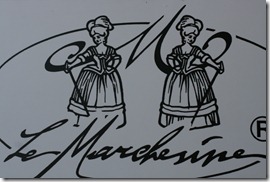Le Marchesine – five generations leading to excellence
 Le Marchesine is a successful family firm without any grand pretensions. Three generations of the family were present on the day we visited, there have been five in all – so far. With 50 hectares of their own vineyards and a further 23 on long term loan they now produce nearly 500,000 bottles of wine which are overwhelmingly Franciacorta DOCG, ie the bottle-fermented sparkling wine made on the Champagne model. They had a particularly good year in 2011 when Secolo Nuovo, their top wine, won the Sparkling Wine of the Year award from the Gambero Rosso, to cap other prizes.
Le Marchesine is a successful family firm without any grand pretensions. Three generations of the family were present on the day we visited, there have been five in all – so far. With 50 hectares of their own vineyards and a further 23 on long term loan they now produce nearly 500,000 bottles of wine which are overwhelmingly Franciacorta DOCG, ie the bottle-fermented sparkling wine made on the Champagne model. They had a particularly good year in 2011 when Secolo Nuovo, their top wine, won the Sparkling Wine of the Year award from the Gambero Rosso, to cap other prizes.
Our tour focused on the winemaking process. Given their complete control of the process, Le Marchesine can pick with the final wine in view – give or take a few difficulties of understanding with a harvest workforce that is skilled but doesn’t necessarily understand the language. There a small selection in the vineyard and they choose to lower the yield below what the DOCG would allow, which is already quite strict. They then make wine vineyard by vineyard using the full panoply of temperature-controlled wizardry available. The wine is made and then blended under the supervision of consultant Jean-Pierre Valade from Champagne.
The second fermentation takes place with a selection of their own yeasts. In the cellar there are 1.2 million bottles finishing second fermentation or resting in stacks which are an impressive 3 metres high and 4 metres deep. A sample of bottles is fitted with pressure gauges to check the progress of fermentation with the aim of reaching 6 bar (picture below). With the pressures involved, there is the occasional breakage (see below), but as long as this does not rise above a couple of per cent in the whole production process they are not too worried. The completed bottles are put in metal cages which contain 504 bottles each and the yeast deposits worked to the point of the bottle in an impressive line-up of gyropalettes.The standard disgorgement procedure follows: the neck of the bottle is frozen to -20°C, the bottle inverted and its own pressure used to expel the frozen plug; then a second operation removes a bit more wine so that a third can add the liqueur d’expédition without danger of the bottle foaming over. The bottle is then topped up with the same wine to exactly the right level – it is a technological marvel of precision. The bottles are then corked and the wire muzzle added; they are washed and dried and labelled and dressed. After the processing is completed, the bottles are rested for a minimum of 60 days before they are sold. After all that work, you want every bottle to be in top condition.
We tasted a good range of the sparkling wines all of which are of high quality and which are true to type – the Extra Brut non vintage (actually 2009 and with about 1g of residual sugar, so it could be called Pas Dosé if they wished as no sweetness is added), Brut, Satèn (a small part of its Chardonnay being aged in wood, the only wine treated this way here), Rosé Millesimato 2007 and the two top wines:Blanc de Blancs 2007 – 100% Chardonnay selecting only very good fruit and three years in the bottles on the lees. Pronounced aromas, beautiful fruit – ripe peach, melon, apple; very ripe on the palate but balanced, with a dry and fruity finish.
Secolo Nuovo Brut Millesimato 2006 – again 100% Chardonnay from the La Santissima vineyard with the best south-facing exposition. This started as a small production of 3,000 bottles but has been such a success that they have bought the adjacent plots and can produce 10,000 bottles now, all of which are aged for four years before disgorgement. The end result is a wine of complexity and stature, classic lines, pure fruit with beautiful and balanced ripeness. A high point of an excellent range of well-made wines.
Without making a great fuss, Le Marchesine across the generations have set high standards for Franciacorta wines which deserve to be drunk even more widely than they are.
Return to the Franciacorta home page: click here


Comments are closed.